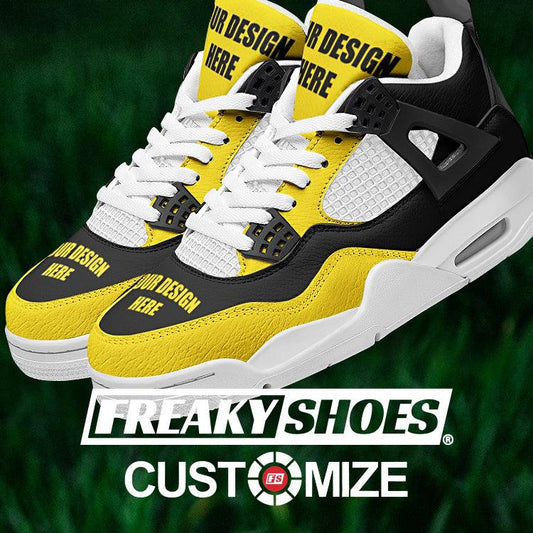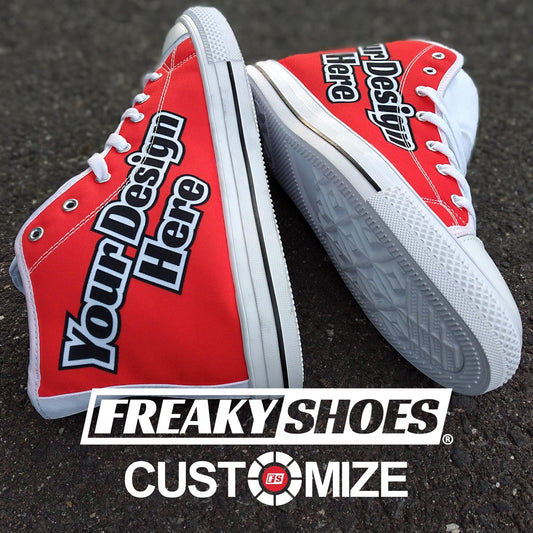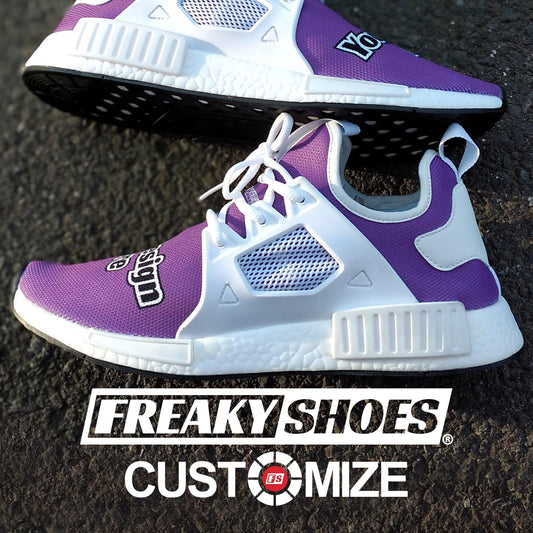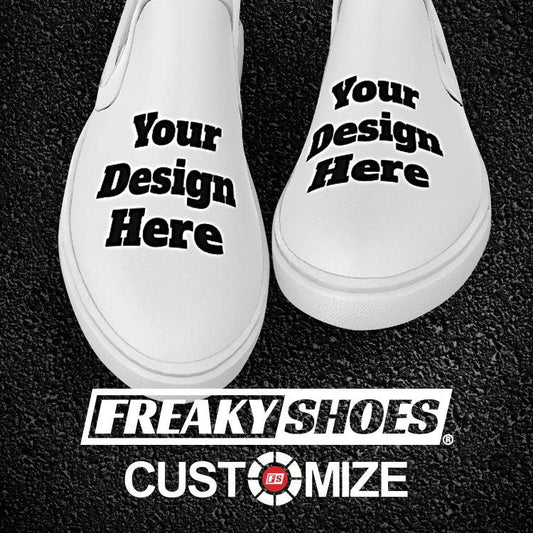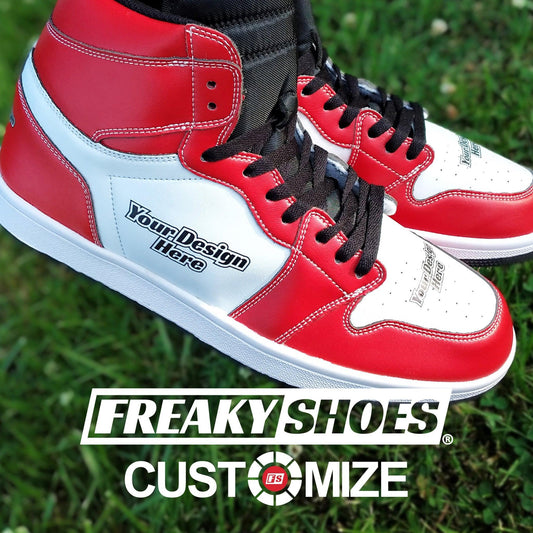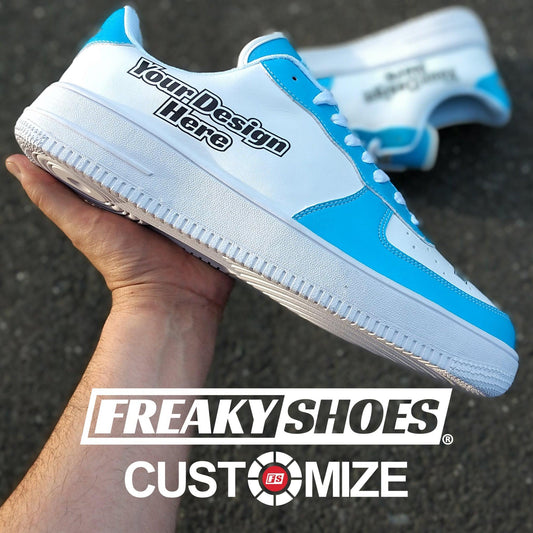Nike versus Adidas. Their battle has been legendary, and it’s undoubtedly the biggest one in the footwear industry.
Both are top brands. Both look great. But note that each has its own vibe. What if we told you there’s a clear winner of the “Nike vs Adidas” debate?
It’s true. You can choose which is better for you based on how you move, dress, and live.
So, which one to buy - Nike or Adidas?
Well:
-
Nike is more performance-driven, flashy, and hype-focused.
-
Adidas is more about comfort, street style, and value.
But trust us; the full comparison is way more fun. Stay tuned!
Key Takeaways
-
Nike was born in the USA, while Adidas got its start in Germany.
-
Nike’s designs are louder and bolder, while Adidas keeps it clean and comfy.
-
If you’re in the States, you’ll see Nike everywhere, but in Europe and on the football field, Adidas is the go-to.
-
Nike tech focuses on speed and performance; Adidas Boost is all about all-day comfort.
-
Usually, Nike sneakers hit your wallet harder, especially those hype releases.
-
Nike’s the king of resale value and hype, but Adidas nails those cool collabs and fashion drops.
-
Nike’s got a head start with its digital apps and online experience, but Adidas is catching up fast.
-
At the end of the day, both brands are solid — it really depends on your style and what you want to wear every day.
Nike vs Adidas: 14 Differences Between Adidas and Nike

Nike focuses on high-performance sportswear with bold design and tech innovation. Adidas relies on comfort, street style, and performance. Nike leads in the U.S. market, while Adidas is stronger in Europe.
Nike continues to dominate the market with its latest reported sales reaching around $51.4 billion. Gross profit also climbed slightly to $22.89 billion. Meanwhile, Adidas has faced a tougher year, according to the Wall Street Journal. Their revenue landed at approximately $23.19 billion. It’s a noticeable drop of about 5% compared to the previous year.
Here’s the complete Nike versus Adidas table:
|
Category |
Nike |
Adidas |
|
Origin |
USA |
Germany |
|
Design Philosophy |
Louder and bolder |
Clean and comfy |
|
Market Leadership |
Dominates U.S. market |
Rules Europe and football |
|
Tech Focus |
Built for speed |
Boost is soft and all-day cozy |
|
Pricing |
Usually more expensive, especially on hype drops |
Often more affordable |
|
Resale & Hype |
Wins in resale and hype culture |
Shines in collaborations and fashion |
|
Digital Ecosystem |
Bigger and more established |
Catching up |
|
Overall Choice |
Choose based on personal style and daily life |
Choose based on personal style and daily life |
Now, the details!
Origin & Founders
Did you know Nike was founded in 1964 by Bill Bowerman and Phil Knight in the U.S? Yep. It was originally under the name Blue Ribbon Sports. They started out by importing Japanese running shoes. In 1971, they launched their own brand, Nike, named after the Greek goddess of victory. The now-iconic Swoosh logo was designed for just $35.
Adidas was born earlier, in 1949, in a small German town. Its founder, Adolf "Adi" Dassler, started making shoes in his mother’s laundry room. After a split with his brother (who went on to create Puma), Adi formed Adidas. The name comes from his own — Adi Dassler.

So the origin story is also about geography and values. Nike started with a college coach and an athlete aiming to change running shoes in America. Adidas came from a craftsman’s passion for quality in post-war Germany.
Logo & Branding
Nike’s Swoosh is one of the most recognized logos in the world. Simple, fast, sharp — it matches Nike’s vibe. Along with that, their “Just Do It” slogan is all about pushing boundaries.
Adidas, on the other hand, owns the three stripes. It’s on almost every product they make. Their slogan, “Impossible is Nothing,” carries a more thoughtful, personal challenge.
We’ve seen this difference in branding play out over the years. Nike often partners with athletes who dominate, like LeBron James or Serena Williams. Adidas wants lifestyle icons, like Kanye West, Pharrell, etc.
In our opinion, Nike branding hits harder if you’re into energy, performance, and motivation. Adidas branding connects better if you care about creativity, identity, and culture.
Design Philosophy
Nike designs with performance first. Their shoes often have sharp edges, bold colors, and high-tech shapes. Adidas takes a different route. Their design focuses on performance with minimalism. Most of their popular shoes, like the Ultraboost, can be worn just as easily on the street as in the gym.
We’ve seen this play out in real life. One time we were at a sneaker event in L.A., and you could instantly spot who was wearing Nike vs Adidas. Nike fans had those bright, futuristic kicks with big air units. Adidas fans rocked clean, neutral tones with comfort-first designs.
Market Strength
Nike is the biggest sportswear brand in the world. It owns a huge chunk of the U.S. market. If you walk into any American sports store, chances are Nike dominates the shelves.
Adidas is still number two globally but holds a stronger grip in Europe. Especially in soccer, Adidas is everywhere.
When we visited stores across Europe and the U.S., we saw this difference clearly. In Berlin, almost every kid wears Adidas. In Chicago, it’s Nike from head to toe.
What helps Nike is their focus on basketball, football, and running. These are huge in the U.S. Adidas owns the football (soccer) world and is strong in streetwear.
Footwear Technology
Nike invests big in innovation. Their shoes are packed with tech: Air Max for cushioning, ZoomX for speed, React for bounce, Flyknit for lightweight support, and Vaporfly for elite running.
Adidas has its own tech game. Their Boost foam changed the comfort game. Lightstrike keeps shoes light for runners and hoopers. Primeknit gives a sock-like fit. The Ultraboost line is a go-to for both athletes and casual wear.
We’ve tested both. Nike ZoomX feels more like performance gear — snappy, light, race-ready. Adidas Boost is softer, more bouncy, and better for all-day wear.
Tech-wise, Nike often goes futuristic and athlete-first. Adidas focuses more on comfort and style balance.
Comfort & Cushioning
Nike’s cushioning is tuned for athletes. It’s tight, springy, and designed to give you speed and response. Adidas Boost, though, is comfort heaven.
One of our teammates wore Nike Zooms for a half-marathon. He said they felt great during the race, but a bit stiff for regular walking. Another friend used Adidas Ultraboosts for a weekend trip — walked 25,000 steps a day — no pain, just plush comfort.
Sports Sponsorships
Nike sponsors global icons like LeBron James and Cristiano Ronaldo, and is a major partner of the NBA and NFL. Adidas backs soccer superstars like Lionel Messi, Mo Salah, and top clubs like Real Madrid and Bayern Munich.
Both brands go hard in sports marketing, but in different ways. Nike invests heavily in U.S. sports — basketball, American football, and track. Adidas rules the global football (soccer) scene.
We’ve followed this for years. When we watched an NBA game, Nike’s logo was everywhere. But when we tuned into Champions League nights, it was all Adidas.
Fashion & Streetwear
Nike has nailed performance gear and street style. Shoes like the Air Force 1 and Dunks are seen everywhere. Adidas leads in lifestyle wear through wild collabs like Yeezy, Pharrell, and even Gucci.
We remember lining up outside a Nike store for the Off-White drop. Madness. But also saw the same hype when Adidas dropped Yeezy Boost 350s. Both brands know how to move culture.
Pricing
Nike is more expensive than Adidas. We’ve compared both across dozens of stores. The average Nike running shoe often hits $120-$160. Adidas usually starts closer to $100-$130 for similar types.
Hyped collabs raise prices fast on both sides. A special edition Jordan or Yeezy could double or triple in resale value. But for general wear, Adidas usually wins on value.
When we’ve recommended shoes to friends on a budget, Adidas was often the better deal, especially for casual wear.
In short: Nike feels premium. Adidas feels accessible.
Sustainability Efforts
Nike’s “Move to Zero” campaign focuses on carbon reduction. They use recycled polyester and sustainable cotton across many products. Adidas works with Parley for the Oceans, making shoes from ocean plastic, and has set goals to be fully sustainable by 2025.
We think both brands are trying, but Adidas seems more committed publicly. Their messaging is more visible. You’ll spot Parley labels easily in stores. Adidas also released fully recyclable shoes like the Futurecraft Loop.
Nike is making progress, too, but less aggressively. Their shoes like Space Hippie used upcycled materials and looked futuristic.
Innovation Approach
Nike pushes hard into performance tech. They test with elite athletes and build from the ground up. Adidas blends comfort, performance, and eco-focus.
Nike's Vaporfly changed marathon racing. ZoomX foam is light and explosive. Adidas answers with Boost and Lightstrike, which feel more balanced and cozy.
We’ve tried both on runs and workouts. Nike’s performance shoes feel fast, made for race day. Adidas feels more versatile (good for training or chilling).
Innovation style also differs. Nike's shoes often look wild. Adidas keeps it cleaner.
Product Customization
Nike's Nike By You program lets you fully customize shoes and apparel. You pick colors, materials, and even add text. Adidas also has customization, but Nike’s platform is more detailed and user-friendly.
We’ve used both. On Nike By You, you can spend hours tweaking every piece of the shoe. Adidas’ customizer works too, but with fewer choices.
If you’re the creative type, you’ll love Nike’s tool. We made a pair of all-red Air Max 90s once, with our name on the heel. Got compliments every time we wore them.
App & Digital Integration
Nike has built an entire ecosystem. Nike Training Club, Nike Run Club, and the SNKRS app give access to workouts, shoe drops, and fitness tracking. Adidas has the Adidas Running app (formerly Runtastic).
We use both regularly. Nike’s fitness apps are clean, motivating, and work well with Apple or Android devices. SNKRS is where all the hype drops live. It’s fun — and frustrating if you don’t win a pair.
Adidas Running is solid, tracks workouts well, and Confirmed is decent for drops. But it feels a bit more limited compared to Nike’s digital world.
Resale & Hype Culture
Nike owns the resale game. Jordans, Dunks, Off-White, and Travis Scott collabs resell for double or more. Adidas had its peak with Yeezy, but that cooled after the Kanye split.
We’ve watched this play out firsthand. One time we sold a limited Jordan 1 for three times retail. Friends flipped Yeezys, too, back when the hype was real.
Today, Nike drives more hype and resale value. Sneakerheads chase SNKRS drops like gold. Adidas still has hits — like the Gucci collab — but it’s not as consistent.
5 Best Nike Shoes
Nike shoes are loved for their comfort, performance, and hype appeal. Here are the top 5 Nike shoes that people love:
|
Nike Shoe |
Why It's Great |
|
Air Force 1 |
Timeless streetwear classic. Clean, comfy, and goes with anything. |
|
Air Max 270 |
Great for casual wear. Super soft heel cushioning. |
|
Vaporfly Next% 3 |
Elite racing shoe. Lightweight and built for speed. |
|
Pegasus 41 |
Daily running beast. Smooth ride, breathable upper. |
|
Dunk Low |
Big in sneaker culture. Comes in endless colorways. |
5 Best Adidas Shoes
Adidas shoes are all about comfort, style, and performance. They’re perfect for both active and laid-back days. Here are the best Adidas shoes in 2025 that everyone’s talking about:
|
Adidas Shoe |
Why It's Great |
|
Ultraboost 23 |
Insane comfort. Great for daily wear or long walks. |
|
Samba OG |
Street-style icon. Back in trend and easy to match. |
|
Adizero Adios Pro 3 |
Top-level running shoe. Fast, responsive, and race-ready. |
|
Forum Low |
80s style comeback. Stylish with jeans or joggers. |
|
NMD S1 |
Modern design, Boost comfort, and street-ready looks. |
Is Nike or Adidas More Expensive?
When it comes to price, Nike is generally more expensive than Adidas, especially in their performance and hype categories. Most Nike running or training shoes start around $120 to $160. Some high-end models like the Vaporfly or Alphafly can go over $250.
Adidas, on the other hand, is slightly more affordable than Nike. Their casual shoes, like Stan Smiths or Sambas, start around $80 to $100. Even their popular Ultraboost line stays close to $180, which is still lower than many of Nike’s performance shoes.
Is Nike or Adidas More Popular?
Globally, Nike is more popular than Adidas. It's the #1 sportswear brand in terms of sales, visibility, and cultural impact, especially in the U.S.
Nike’s partnerships with top athletes like LeBron James, Cristiano Ronaldo, and Serena Williams help keep it in the spotlight. They also dominate the basketball and American football scenes.
Adidas is massively popular too, especially in Europe and soccer-loving countries. They’ve signed stars like Messi and sponsored teams like Real Madrid and Bayern Munich. In lifestyle and fashion, Adidas shines with collaborations like Yeezy (back in the day), Pharrell, and even luxury houses like Gucci.
When we compared Google search trends, Nike usually tops Adidas in most countries — especially for product launches and collabs. Their SNKRS app keeps hype alive with limited releases.
Nike vs Adidas vs Puma
Nike, Adidas, and Puma all make great shoes, but they are different.
|
Shoe |
Nike |
Adidas |
Puma |
|
Running |
Pegasus 41 |
Ultraboost 23 |
Deviate Nitro 2 |
|
Streetwear |
Air Force 1 |
Samba OG |
Suede Classic |
|
Training |
Metcon 9 |
Dropset Trainer 2 |
Fuse 3 |
|
Lifestyle |
Dunk Low |
Forum Low |
RS-X |
|
Basketball |
LeBron 21 |
Harden Vol. 8 |
MB.03 (LaMelo Ball) |
Nike vs Adidas vs Under Armour
Nike and Adidas dominate in variety. Under Armour focuses mostly on performance and training.
|
Shoe |
Nike |
Adidas |
Under Armour |
|
Running |
Vaporfly Next% 3 |
Adizero Adios Pro 3 |
Flow Velociti Elite |
|
Gym/Training |
Metcon 9 |
Dropset Trainer 2 |
Project Rock 6 |
|
Streetwear |
Air Force 1 |
Samba OG |
UA SlipSpeed |
|
Basketball |
GT Cut 2 |
Dame 8 |
Curry 11 |
|
Casual Wear |
Air Max 270 |
NMD S1 |
UA HOVR Sonic 6 |
Asics vs Nike vs Adidas Running Shoes
If running is your top priority, then check out this comparison between Asics, Nike, and Adidas:
|
Shoe |
Asics |
Nike |
Adidas |
|
Long Distance |
Gel-Nimbus 26 |
Vaporfly Next% 3 |
Adizero Adios Pro 3 |
|
Daily Trainer |
Novablast 4 |
Pegasus 41 |
SolarGlide 6 |
|
Stability |
Gel-Kayano 31 |
Structure 25 |
SolarControl |
|
Lightweight Speed |
Magic Speed 3 |
ZoomX Streakfly |
Adizero SL |
|
All-Rounder |
GT-2000 12 |
Infinity Run 4 |
Ultraboost Light |
Nike vs Adidas vs Reebok Running Shoes
Reebok is lesser known for serious running, but still offers solid options for casual fitness. Here’s the “Nike vs Adidas vs Reebok” comparison:
|
Shoe |
Nike |
Adidas |
Reebok |
|
Daily Running |
Pegasus 41 |
SolarGlide 6 |
Floatride Energy 5 |
|
Racing |
Vaporfly Next% 3 |
Adizero Adios Pro 3 |
Floatride Run Fast Pro |
|
Lightweight |
Streakfly |
Adizero SL |
Nano X3 Adventure |
|
Stability |
Structure 25 |
SolarControl |
Floatride Energy Symmetros |
|
Budget Trainer |
Downshifter 13 |
Duramo SL |
Lite Plus 4 |
Are Nike Football Boots Better Than Adidas?
Both Nike and Adidas make great football boots, but which is better depends on your style. Nike boots are light and sleek, making them a popular choice if you like speed and agility.
Adidas boots, on the other hand, are often a bit wider and focus on grip and control. They feel solid and comfortable, and models like the Predator are great if you like to control the ball with precision.
Adidas also uses a lot of recycled materials, which is a nice touch if you care about the environment.
So, if you like a fast, snug feel, Nike is probably the better choice. If you prefer control and a bit more room in your boots, Adidas might be a better fit.
Conclusion: So, Nike or Adidas?

Here’s the Nike vs Adidas summary:
-
Go with Nike if you love speed, hype drops, and that bold, performance-first feel.
-
Pick Adidas if you want cozy shoes, chill street style, and better value for money.
-
Both brands are great — it just depends on your lifestyle.
Whatever you choose, you're winning.











